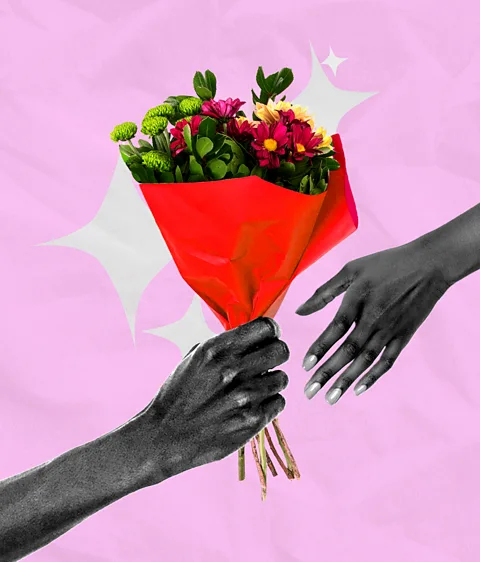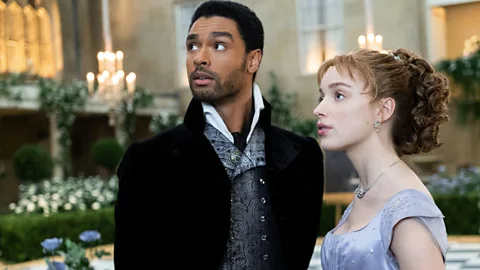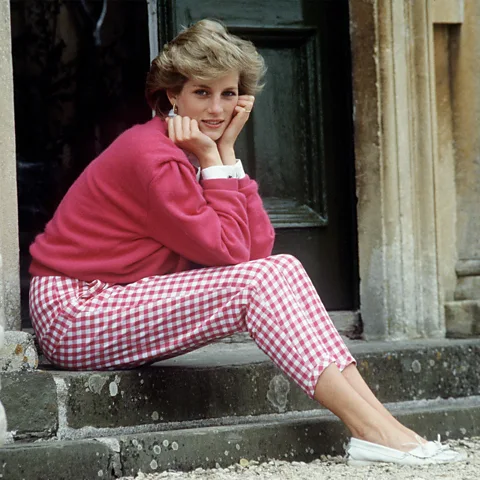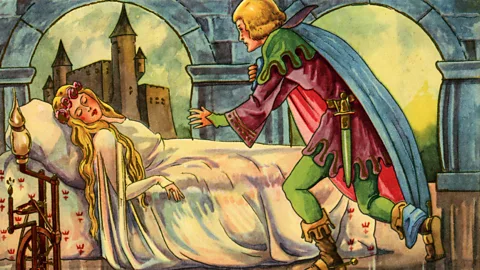'Old-school romance feels special': What is the controversial 'princess treatment' and why is Gen Z obsessed with it?
 Serenity Strull/ Getty Images
Serenity Strull/ Getty ImagesThe social-media phenomenon has been growing online – part etiquette trend, part relationship aspiration, part fairytale. Is it empowering, a bit of fun, or something more sinister?
We're used to seeing old-fashioned, high-society courtships played out on such TV shows as Bridgerton, The Buccaneers and The Gilded Age. But now the fascination with period-drama levels of chivalry has morphed into Gen Z's favourite fast-growing social-media phenomenon: "princess treatment". Just in case you've been too busy attending balls in glittering palaces to follow the latest camera-ready dating trend, princess treatment refers to various supposedly fairy tale-worthy gestures made by women's partners, including (but never limited to) lattes in bed, flowers every Friday, partner-funded pedicures, and doors being opened for you.
In social-media posts, princess treatment is typically contrasted with the "bare minimum" (think: baseline expectations of communication and remembering birthdays). And, of course, such treatment is eminently clickable: social-media platforms have increasingly turned private acts of affection into public displays. But how healthy is it? Part etiquette trend, part relationship aspiration, part fantasy – is princess treatment empowering, a bit of fun, or a sinister kind of turbo-charged trad wife-ism?
 Alamy
AlamyNearly 130,000 Instagram posts congregate under the hashtag #princesstreatment. At the heart of the trend is Utah-based influencer Courtney Palmer, a self-proclaimed "princess housewife", whose TikTok – viewed 7.6 million times – outlines her controversial expectations for her spouse: "At a restaurant with my husband, I don't speak to the hostess, open doors or order my food." Some naysayers have suggested that this is more like the behaviour of a prisoner than a princess. Emma Beddington in The Guardian called it "emetic" and "disturbing". And yet princess treatment is resonating, particularly in the United States.
Why princess treatment is resonating
"In a time where dating can feel transactional and often confusing, old-school romance feels special," says Myka Meier, one of Instagram's biggest etiquette influencers. To Meier, who has more than 650,000 Instagram followers, princess treatment is less about materialism and more about emotional attentiveness. "The fantasy of being 'swept off your feet' taps into a universal desire for elegance, respect and intentionality," Meier tells the BBC.
With a new Downton Abbey film coming this autumn, and the heroine of Lena Dunham's new Netflix series, Too Much, fantasising about being courted by a Mr Darcy-style suitor, there's no denying the current appetite for depictions of old-fashioned, high-society romance. The aforementioned Bridgerton, The Buccaneers and The Gilded Age, not to mention The Crown, have revived interest in old-fashioned wooing, and made a romanticised version of historical high-society courtship accessible to streaming audiences. These period dramas have "absolutely" influenced his audience's dating etiquette questions, says etiquette expert Daniel Post Senning, author of Manners in a Digital World. "Our stories colour how we make sense of our emotions," says Senning, who is the great-great grandson of manners doyenne Emily Post.
How the US fell for fairytales
Despite having broken free from subjecthood nearly 250 years ago, Americans have long been enchanted by royalty. When Queen Victoria was crowned in 1837, "Victoria Fever" swept the US; American women wanted to know everything about her – all the way down to her Chelsea Boots, says Arianne Chernock, a history professor at Boston University. By the mid-20th Century, Disney's animated Cinderella and Queen Elizabeth II's televised coronation had helped to popularise female royals even further.
 Getty Images
Getty ImagesAnd today? "Americans are interested [in royalty] in the 20th and 21st Centuries because Americans have become players within the Royal Family," Chernock tells the BBC. In 1936, Wallis Simpson – a divorced Pennsylvania-born socialite – was at the centre of a constitutional crisis when King Edward VIII abdicated to marry her. Decades later, Prince Harry's marriage to California native Meghan Markle (now the Duchess of Sussex) reignited US attention. And, adds Chernock, Princess Diana, though British, became "the people's princess" across the Atlantic for her humanitarian work and celebrity.
"Diana had huge followings in America," Chernock says. "In fact, she even contemplated moving to America, because she always felt more support here."
Many Americans are fascinated by royalty precisely because it's not theirs, according to Chernock. Monarchy floats above the fray of US politics as a fantasy. "Queens and princesses provide this fusion of private and public unavailable to women in the US, with a gravitas and a political role that's not comparable to our American celebrities," she says.
As the world has moved to online media and social platforms, public fascination with the lives of the rich and royal (both as real figures and fictional characters) has grown. However, while fictional depictions and social-media influencers focus on opulence and ease, real-life princesses also have tremendous soft power, allowing them to be major players when it comes to diplomacy. "Being a princess is hard work," argues Chernock.
Empowering or rebranded regression?
Princess treatment is something of a misnomer, then. Rather than describing the lifestyle of a princess, it seems to be the social-media spin on chivalry, says Senning. In its original medieval context, chivalry was a knightly system with a code of conduct. But in modern history, chivalry connotes men's traditional and courteous behavior towards women, which some scholars say is a reinforcement of traditional gender roles and a manifestation of "benevolent patriarchy".
On the other hand, says Meier, simple acts like pulling out a chair or walking someone home can clarify your care for your partner or date. "Formality slows things down a bit, allows room for appreciation and adds a little layer of magic," she argues.
Harmless enough, then? The rise of princess treatment has sparked fresh debate, but Chernock says that the discussion is nothing new. Society has long used the motif of the princess to explore ideas of womanhood and propriety. "[The princess treatment debate] is a referendum on women's roles in society, and there's never going to be a single perspective on that," she says.
The debate is the latest in a line of highly gendered relationship discourses and follows on the heels of last summer's trad wife fever. Trad wives, or women who embrace and promote traditional gender roles, captivated their followers with their nostalgic (often blonde, bucolic) portrayals of domesticity. The two trends have striking parallels – as Rolling Stone put it recently: "Is 'princess treatment' the gateway drug trad wives have been waiting for?"
 Alamy
AlamyPrincess treatment's similar appeal to nostalgia has sparked its own conversation about power. Why stop at the tiara when you can demand "queen treatment"? Perhaps, to those who are tradwife-inclined, it is the implied passivity of the princess role that appeals. The queen title has a "fraught, political" connotation, suggests Chernock, whereas the princess is framed through the rose-tinted lens of youth, romance and Disney fantasy.
And yet, while princess treatment may seem like a rebranding of retrograde gender roles, Chernock points out that, on one level, the appeal of princesses emerges from their strength. "When girls play princess," she says, "they are looking for permission to be commanding." Or maybe they don't need permission. After all, if it's women who are posting about princess treatment, isn't it women who are in charge?
--
If you liked this story, sign up for The Essential List newsletter – a handpicked selection of features, videos and can't-miss news, delivered to your inbox twice a week.
